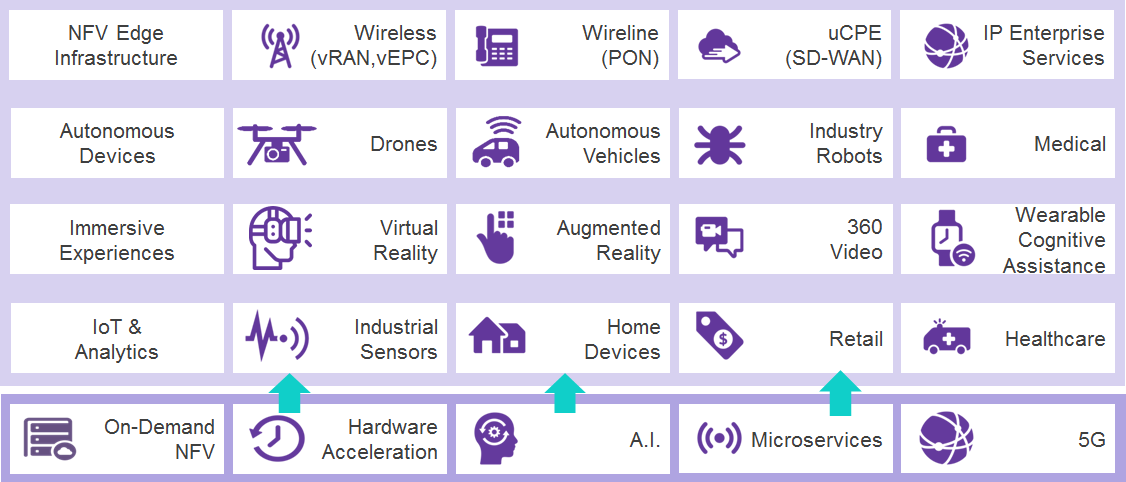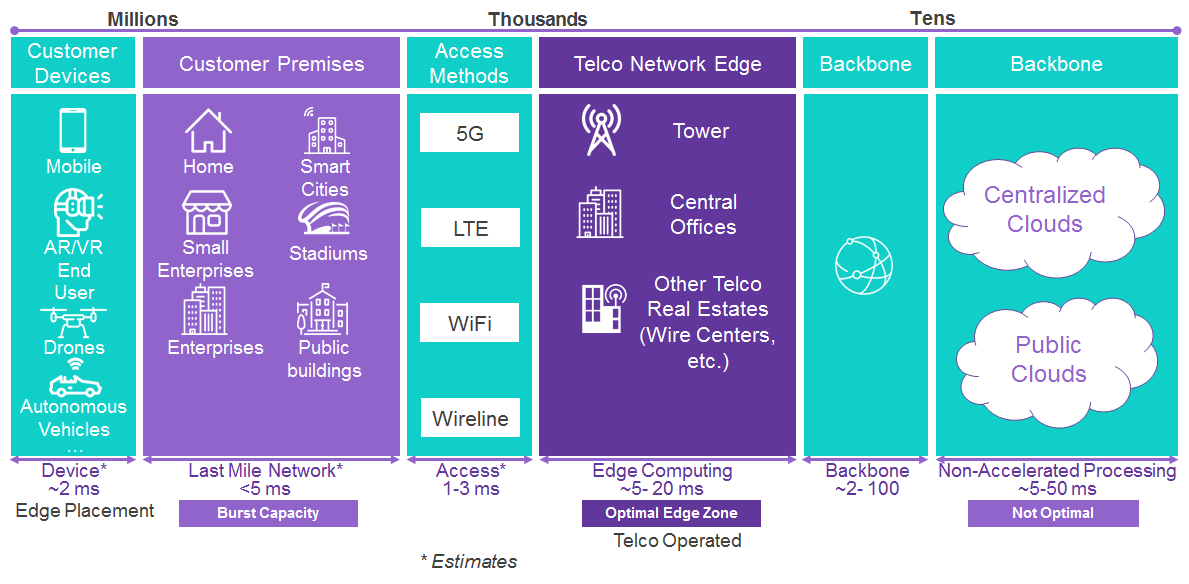Contents
Introduction
The evolution and rapid progression of new technologies like augmented reality, autonomous vehicles, drones, and smart cities are inevitable.
The demand for real-time processing capabilities at the edge instead of centralized processing can be addressed with Edge Computing. Edge Computing enables processing and storage capabilities closer to the endpoint using familiar cloud technologies. This approach will reduce the total cost of ownership and enable faster processing to meet application latency (< 20 ms) requirements. The Edge Cloud solution will also comply with local and global data privacy requirements.
There are many open source projects that provide component capabilities required for edge computing. However, there is no holistic solution to address the need for fully integrated edge infrastructure.
Akraino Edge Stack, a Linux Foundation project initiated by AT&T and Intel, intend to develop a fully integrated edge infrastructure solution, and the project is completely focused towards Edge Computing. This open source software stack provides critical infrastructure to enable high performance, reduce latency, improve availability, lower operational overhead, provide scalability, address security needs, and improve fault management. The Akraino community will address multiple edge use cases and industry, not just Telco Industry. Akraino community intended to develop solution and support of carrier, provider and the IoT networks.
AT&T's seed code will enable carrier-scale edge computing applications to run in virtual machines and containers. AT&T’s contributions, which will include support for 5G, IoT, and other networking edge services will enhance reliability and enable high performance.
Intel upstreamed Wind River Titanium Cloud portfolio of technologies to open source in support of additional blueprints in Akraino.
The Akraino Edge Stack project community, while embracing several existing open source projects, will continue the focus on the following Community Goal:
▪ Faster Edge Innovation - Focused group facilitating faster innovation, incorporating hardware acceleration, software-defined networking, and other emerging capabilities into a modern Edge stack.
▪ End-to-End Ecosystem - Definition and certification of H/W stacks, configurations, and Edge VNFs.
▪ User Experience - Address both operational and user use cases.
▪ Seamless Edge Cloud Interoperability- Standard to interoperate across multiple Edge Clouds.
▪ Provide End to End Stack- End to end integrated solution with demonstrable use cases.
▪ Use and Improve Existing Open Source - Maximize the use of existing industry investments while developing and up-streaming enhancements, avoiding further fragmentation of the ecosystem.
▪ Support Production-Ready Code - Security established by design and supports full life-cycle.
Akraino is a complementary opensource project, and interfaces with the existing projects namely Acumos AI, Airship, Ceph, DANOS, EdgeX Foundry, Kubernetes, LF Networking, ONAP, OpenStack, and StarlingX.
Emerging Technologies
As highlighted in the Introduction section, there are several emerging technologies such as, (Refer the picture below)
- Telco NFV Edge Infrastructure - Running cloud infrastructure at the network edge allows for the virtualization of applications key to running 5G mobility networks at a greater scale, density and lower cost using commodity hardware. This infrastructure also enables the virtualization of wireline services, Enterprise IP services and even supports the virtualization of client premises equipment. This reduces the time to provision new services for customers and even, in some cases, allows those customers to self-provision their service changes.
- Autonomous devices - Drones, Autonomous Vehicles, Industry Robots and such customer devices require a lot of compute processing power in order to support video processing, analytics and etc., Edge computing enables above-said devices to offload the computing processing to the Edge within the needed latency limit.
- Immersive Experiences - Devices like Virtual Reality (VR) headsets and Augmented Reality applications on user’s mobile devices also require extremely low levels of latency to prevent lag that would degrade their user experience. To ensure this experience is optimal, placing computing resources close to the end user to ensure the lowest latencies to and from their devices is critical.
- IoT & Analytics - Emerging technologies in Internet of Things (IoT) demands lower latencies and accelerated processing at the edge.
To ensure timely information arrives for data-driven decisions for manufacturing and shipping businesses, edge computing is also beneficial. Receiving and processing this data at the edge allows more timely decision making leading to better business outcomes.
Network Edge - Optimal Zone for Edge Placement
The processing power demands of customer devices, namely AR/VR, Drones, and Autonomous Vehicles are ever increasing and require very low latency, typically measured in milliseconds. The place where processing takes place plays a major role with respect to quality of user experience and cost of ownership. Centralized cloud decreases the TCO, but fails to address the low latency requirement. Placement at customer premises is nearly impossible with respect to cost and infrastructure. Considering the cost, low latency, and high processing power requirements, the best available option is to utilize the existing infrastructure like Telco’s tower, central offices, and other Telco real estates. These will be the optimal zones for the edge placement.
Akraino Edge Stack
The Akraino Edge Stack is a collection of multiple blueprints. Blueprints are declarative configuration of entire stack i.e., Cloud platform, API and Applications. Intend of Akraino Edge Stack is to support VM, container and bare metal workloads. Akraino is a complimentary OpenSource project and it is intend to use upstream community work in addition to the software development within the Akraino community.
A typical service provider will have thousands of Edge sites. These Edge sites could be deployed at Cell tower , Central offices, and other service providers real estate such as wire centers. End-to-End Edge automation and Zero-Touch provisioning are required to minimize OPEX and meet the requirements for provisioning agility.
The Akraino Edge Stack is intended to support any type of access methodologies such as Wireless (4G/LTE, 5G), Wireline, Wi-Fi, etc.,
In order to be resilient, Akraino Edge Stack deployment intent to follow hierarchy of deployments such as collection of central sites that deploys collection of regional sites. The regional sties that facilitates the deployment of Edge Sites. For example, the figure below shows central site C1 and C2 allows the management of regional sites R1, R2, R3, and R4. And regional sites allows the management of Edge Sites which are remote and closer to the users.
Regional sites serve as the controller for Edge sites in their corresponding "Edge Flock".
To promote the high availability of Edge Cloud services, Akraino regional sites are setup redundantly to overcome site failures.


